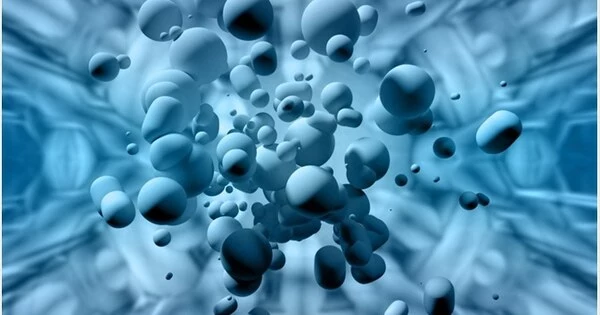A nanoparticle, also known as an ultrafine particle, is a matter particle with a diameter of 1 to 100 nanometres (nm). These are nanoscale particles or structures with at least one dimension, typically ranging in size from 1 to 100 nanometers (nm). The term is also applied to larger particles with diameters of up to 500 nm, as well as fibers and tubes with diameters of less than 100 nm in only two directions. To put this in context, a nanometer is one billionth of a meter, or 100,000 times smaller than the width of a human hair. Metal particles smaller than 1 nm in size are commonly referred to as atom clusters.
Metals, metal oxides, polymers, and organic molecules, among other materials, can be used to make nanoparticles. They can occur naturally, such as in volcanic ash and ocean spray, or they can be engineered specifically for a specific purpose. Because of their unique properties and potential benefits, nanoparticles have received a lot of attention and application in a variety of fields.
Nanoparticles are distinguished from microparticles (1-1000 m), “fine particles” (sized between 100 and 2500 nm), and “coarse particles” (sized between 2500 and 10,000 nm) by their smaller size, which results in very different physical or chemical properties, such as colloidal properties and ultrafast optical effects or electric properties. Some of the most important characteristics and applications of nanoparticles are:
- Large Surface Area: These have an extremely high surface area compared to their volume, making them ideal for catalysis, adsorption, and drug delivery.
- Quantum Effects: At the nanoscale, quantum effects become important, leading to distinctive optical, electrical, and magnetic properties. Quantum dots, for example, have tunable optical properties and are used in displays and medical imaging.
- Enhanced Reactivity: These can have enhanced reactivity due to their small size and high surface area. This makes them useful in catalysis, where they can speed up chemical reactions.
- Drug Delivery: These can be used to encapsulate and deliver drugs, enabling targeted therapy, controlled release, and improved bioavailability.
- Materials Enhancement: These can be added to materials like polymers, ceramics, and composites to improve their mechanical, electrical, or thermal properties.
- Imaging: These can be used as contrast agents in medical imaging techniques such as magnetic resonance imaging (MRI) and computed tomography (CT) scans.
- Environmental Applications: These are used in water and air purification systems to remove pollutants and contaminants.
Although nanoparticles have shown great promise in a variety of fields, their use raises concerns about potential environmental and health consequences, particularly when they are released into the environment or come into contact with living organisms. As a result, investigating the safety and ethical application of nanoparticles is an important aspect of their development and application.
















